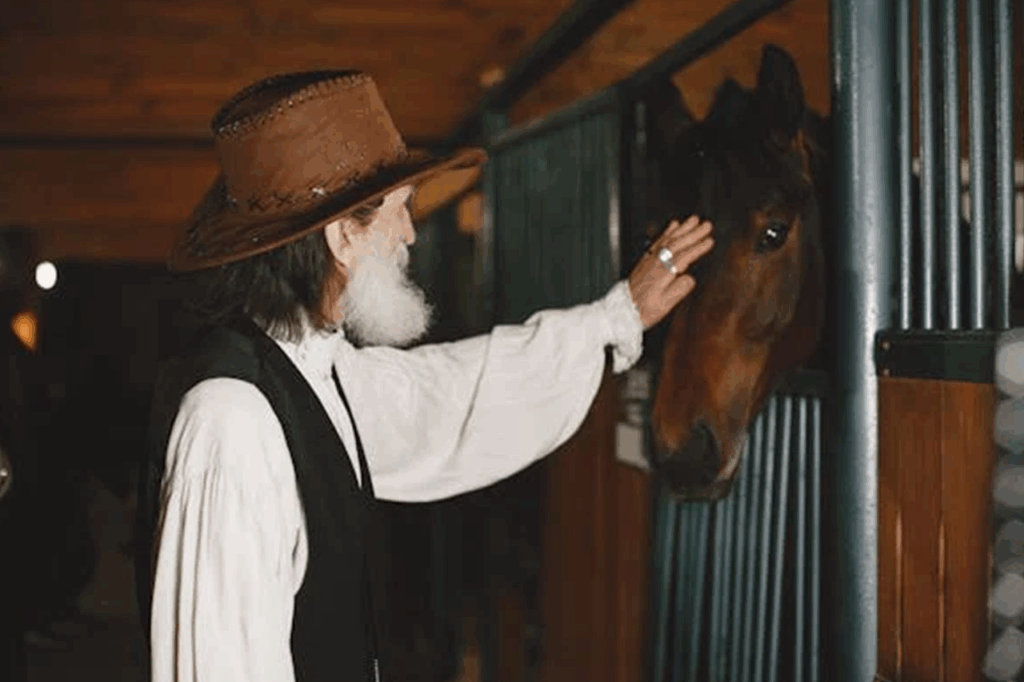Designing a metal barn is a significant investment. Ensuring it meets your current and future needs is critical to maximizing its value. Metal barns are favored for their strength and durability, but the true benefits come when the design is tailored to suit your lifestyle, agricultural operations, storage requirements, or even business aspirations.
You might be interested in building a barn for livestock, equipment, storage, or for use as a multi-use structure, so incorporating the right features is important..
This comprehensive guide explores the essential features to consider when planning your metal barn, helping you make informed decisions that turn a basic structure into a highly efficient and reliable asset.
Purpose-Driven Layout and Design
Before any materials are ordered or construction begins, you must identify the primary purpose of your barn. Are you housing livestock, storing farm equipment, or using it as a workspace or warehouse? The function of your metal barn directly informs every design choice, from layout and ventilation to insulation and access points.
For instance, livestock barns need ample ventilation, natural light, and drainage. In contrast, an equipment storage barn benefits more from wide access doors, reinforced flooring, and open spans for maneuvering large machinery. For multi-purpose barns, it’s crucial to segment the interior into zones for each function to ensure cleanliness, safety, and operational efficiency.
Creating a floor plan that matches your workflow and considers future expansion will make your barn a long-term solution, not just a short-term fix.
Optimal Size and Dimensions
One of the major advantages of metal buildings is the ability to customize size. Determining the right dimensions for your metal barn is a balancing act between meeting your current needs and allowing for future growth. Undersizing a barn can lead to overcrowding and inefficiencies, while oversizing can inflate costs unnecessarily.
When determining the size, take into account not only the items or animals the barn will hold but also the space needed for movement, maintenance, and access. For barns that will accommodate large farm equipment or vehicles, higher ceilings and wider doorways are essential. Consider eave height and roof pitch as well, especially if you plan to include lofts or overhead storage.
A carefully calculated barn size ensures you’re getting the best value and usability from your investment.
Durable and Weather-Resistant Materials
Metal barns are built to withstand the elements, but the quality of materials used can greatly affect their durability. Galvanized steel is the most popular choice due to its strength and corrosion resistance. Selecting high-quality metal panels and fasteners will protect your barn from rust, high winds, and heavy snow loads.
Also consider regional weather conditions—barns in humid or coastal areas benefit from coatings that resist salt and moisture, while those in tornado-prone areas should include wind-rated reinforcements. Insulated panels can prevent condensation, reduce noise, and improve energy efficiency, especially if you plan to climate-control the barn.
Investing in the right materials upfront will pay off in the form of fewer repairs and longer life.
Strong and Stable Foundation
A metal barn is only as good as the foundation it’s built on. Whether you opt for a concrete slab, pier system, or perimeter foundation, it must be engineered to handle the weight of the structure and any loads it may support. Site preparation is also critical—ensure the ground is leveled, properly graded for drainage, and free from vegetation that could interfere with the foundation’s integrity.
In regions with freeze-thaw cycles, proper depth and insulation of the foundation are necessary to prevent shifting. Anchoring the building to the foundation is another important feature that ensures the barn can withstand strong winds and seismic activity.
Consulting with an engineer during the planning stage helps ensure your foundation is as strong and lasting as the metal barn it supports.
Adequate Ventilation
Ventilation plays a critical role in maintaining a healthy, comfortable environment inside a metal barn. Without proper airflow, barns can become hot, stuffy, and prone to condensation, which can damage equipment, feed, and livestock health.
Passive ventilation features like ridge vents, gable vents, and open eaves allow hot air to rise and escape naturally. In more enclosed barns or humid climates, active ventilation—such as exhaust fans and louvered intakes—may be required to maintain proper air circulation.
For barns that house animals, good ventilation helps control ammonia buildup from waste and reduces the risk of respiratory issues. Ventilation is also important in barns used as workshops, where fumes and dust can accumulate.
Lighting and Electrical Systems
Thoughtful lighting design enhances safety and usability. Natural light from skylights or transparent wall panels can reduce electricity costs while creating a well-lit interior. But for nighttime or enclosed barns, efficient artificial lighting is essential.
LED lights are a popular option due to their long lifespan and low energy consumption. Consider motion sensors or zoned lighting to improve efficiency. Also plan for adequate power outlets, especially if your barn will power tools, water pumps, or charging stations.
For agricultural operations, you may need a separate electrical panel or backup generator, especially in remote locations where power outages are more common.
Insulation and Climate Control
If your barn will be occupied year-round or used for temperature-sensitive storage, insulation is a must. Proper insulation not only maintains comfortable temperatures but also reduces condensation and protects equipment from rust or corrosion.
Common insulation options for metal barns include fiberglass batts, spray foam, and rigid foam panels. Each has pros and cons depending on your climate and budget. For ultimate comfort, consider adding a heating and cooling system, particularly in barns converted into office space, studios, or animal shelters.
Good insulation improves both comfort and the long-term structural health of your barn.
Accessible and Secure Entry Points
Access is another crucial design element. Whether you’re moving animals, vehicles, or supplies, you need doors and entryways that accommodate your workflow. Overhead garage doors, sliding barn doors, walk-through doors, and even automated entries can be incorporated based on your needs.
Make sure entrances are wide and tall enough for any equipment you plan to use. Also, consider security features such as locking systems, lighting, and surveillance cameras—especially if the barn houses valuable tools, feed, or machinery.
Proper access and security increase convenience and peace of mind.
Water Supply and Drainage Systems
Many barns require access to water—for livestock, irrigation, cleaning, or processing. Plan for the installation of plumbing systems that include spigots, troughs, sinks, and water heaters if needed. Additionally, barns used for livestock must include waterers and drain systems to handle waste and runoff.
Good drainage is just as important outside the barn. Gutters, downspouts, and proper grading around the building help direct water away from the foundation and prevent pooling. Inside, sloped flooring and trench drains can channel liquids away from animal areas or wash bays.
Water management is essential for cleanliness, sanitation, and structural longevity.
Storage Solutions
Barns often serve as primary storage facilities for everything from hay and tools to recreational equipment and feed. Built-in storage options—such as lofts, shelves, cabinets, or tool lockers—maximize your use of space and help keep things organized.
Designate separate areas for short-term and long-term storage, and ensure that access is easy, especially for heavier or frequently used items. Lofts can free up floor space for movement or large machinery. Consider ceiling hoists, wall racks, or mobile shelving for further flexibility.
Customized storage keeps your barn functional and clutter-free.
Workspaces and Livable Areas
Depending on how you use your metal barn, it may make sense to include designated work or livable areas. Workspaces can range from simple benches and tool stations to enclosed rooms for processing produce, caring for animals, or running a home-based business.
If you plan to spend extended time in your barn, adding a break room, bathroom, or office space can increase comfort and productivity. These spaces should be insulated, climate-controlled, and well-lit for year-round usability.
Barns with finished interiors offer added flexibility and can even be adapted into barndominiums or mixed-use properties over time.
Future Expansion Possibilities
Your needs today may not be the same five or ten years from now. Smart barn design considers future expansion, whether that means extending the roofline, adding lean-tos, or installing modular wall panels for later reconfiguration.
Discuss with your builder or designer how your barn can adapt as your farm, business, or property evolves. Choose a structure with clear-span design if open floor plans are important, and plan for upgrades like solar panels, insulation, or technology integration.
Building with the future in mind ensures your barn remains relevant and functional for decades.
Permits, Zoning, and Regulations
Finally, any metal barn design must comply with local building codes, zoning regulations, and permitting requirements. These rules may dictate setbacks from property lines, maximum height, roof pitch, and use-case restrictions.
Working with a qualified contractor or building provider who understands local laws can save time and ensure compliance. Failure to adhere to regulations can result in fines, project delays, or even the need to alter your building after completion.
Start the process with a clear understanding of local requirements so that your barn is legal, insurable, and ready for use.
Conclusion
Designing a metal barn that stands the test of time requires more than just selecting the right materials; it demands thoughtful planning, customization, and attention to the unique needs of your property and lifestyle. From structural elements like ventilation and insulation to practical details like entryways and drainage, every feature plays a role in how efficiently and effectively your barn functions.

